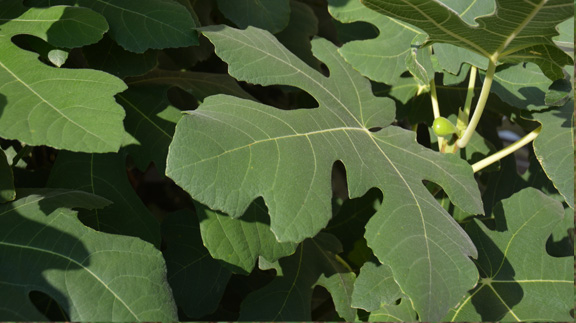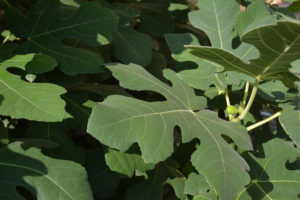Farm & Ranch
Expert says organic fruit, nuts have a market, but growing a challenge in Texas

By: Kathleen Phillips
- Writer: Kathleen Phillips, 979-845-2872, [email protected]
- Contact: Monte Nesbitt, 979-862-1218, [email protected]
COLLEGE STATION — When looking at fruit with a consumer’s eye and pocketbook, the challenge of growing organically may be worth it for Texas growers, according to an expert at the recent fourth annual Texas Fruit Conference in College Station.
No matter the fruit, the nearly 200 attendees were told, consumers are increasingly interested in locally grown fruit and may also pay a premium for a variety of organic methods used to grow the produce, Monte Nesbitt, Texas A&M AgriLife Extension Service horticulturist, said.
“There is no question that we are in the midst of a locally grown food trend,” he said. “There is a lot of interest in buying meat, cheese, fruit and vegetables close to home. If people can find it locally, it’s attractive.”
Texas had the second highest growth in the number of farmers markets in 2011, Nesbitt noted, at 38 percent, while the number of farmers markets nationwide has jumped from 1,755 in 1994 to 8,144 in 2013.
He said consumers who purchase locally grown products perceive them to be environmentally friendly.
“They believe it will improve their quality of life,” Nesbitt said, noting that large retailers are also recognizing this trend and trying to supply locally grown produce in their stores, because consumers have a heightened concern over the safety or freshness of food grown further away.
“In a recent 20/20 poll, 45 percent of the people said they believe organic foods are more nutritious than conventionally grown food,” Nesbitt said. “Though that may not be scientific fact, we think it’s important to know what the public is thinking.”
To grow fruit organically, however, may require new skills and knowledge, Nesbitt noted, plus attention to detail in order to harvest a crop that can be sold for a higher price than conventionally produced fruit.
He cited a study by a pro-organics institute, which indicated that certified organic fruit was sold for substantially higher prices. Blueberries, for example, drew an average 98 percent price premium at various locations in the U.S., according to that institute’s study, while apples were 46 percent higher. Similar comparisons by the U.S. Department of Agriculture-Economic Research Service show fruit produced organically may obtain a 28 to 73 percent increase in market price.
“On the flip side, does it cost more to produce organic fruit? There are various organic systems, so it is a challenge to find good comparisons on this question,” Nesbitt said. “It depends on the commodity and where you are in the country.”
Growing fruit and nut crops in Texas is a challenge no matter the system, he said. The biggest orchard crops in the state are pecans with 70,000 acres, citrus with 25,000 acres and wine grapes with 7,000 acres. Most all other fruit or nut crops in Texas are in the 4,000-acre range or less. Some attempts to grow fruit crops have declined, he said, noting that the once-commercial fig industry in the state went defunct by 1920 and peaches have dropped 54 percent in acreage over the past 15 years.
“Freezes and blight. That sums up a lot of our challenges in Texas,” Nesbitt said. “There were 883,000 citrus trees producing commercially in the Houston-Galveston area in the 1910 Census of Agriculture. By the 1920 census, there were only 123,000 due to the 1918 freeze.”
Texas weather extremes – dropping from 80 degrees to freezing in one week, for example — make it hard for a plant to acclimate, he added.
“In more northern fruit growing areas, they have winter until winter is over,” he said. “That means nothing in Texas.”
Other challenges, such as rainfall, heat and humidity are what leads to blight diseases, Nesbitt said. Managing weeds and insects are other situations that need to be considered before trying organic production.
He suggested native fruits, like dewberries, persimmons, mustang and muscadine grapes, wild plums, prickly pear, huckleberry, passionfruit and paw paw, are testimony organic can work well for some crops in the state. Figs, blueberries, olives, Asian persimmons and citrus, among others, are commercially marketed fruit that also have potential.
“The idea is to find the right crop for the right soil and temperature zone in Texas, where serious fruit pests are not present,” Nesbitt said. “If you want to grow fruit organically in Texas, there is a ‘best crop fit’ for you, depending on where you are within the state.”
For more information, he said, go to http://bit.ly/texasorganicfruit.
-30-
Find more stories, photos, videos and audio at http://today.agrilife.org
Farm & Ranch
Managing Show Cattle Through The Winter

By Heather Welper
Husband and wife duo, Heather and Calvin Welper, are the Co-Owners and Operators or Two C Livestock, located in Valley View, Texas.
The pair’s operation has a show cattle focus where they raise and sell purebred heifers of all breeds and club calf Hereford steers.
When it comes to show cattle, the Welpers know a thing or two including how to prepare for the cold winter months and the Texas major show season run.
To read more, pick up a copy of the November edition of North Texas Farm & Ranch magazine, available digitally and in print. To subscribe by mail, call 940-872-5922.

Farm & Ranch
Double M Ranch & Rescue

By Hannah Claxton, Editor
As the sun rises each day, so do the dozens of mouths that Meghan McGovern is responsible for getting fed. Rather than the sounds of a rooster crowing, McGovern hears the bellows and bleats of a variety of exotic deer, the chortle of kangaroos, the grunts of water buffaloes, and the chirps of a lemur.
Nestled against the banks of the Red River, the Double M Ranch and Rescue, with its high game fences and deer sprinkling the landscape,s its in stark contrast to the surrounding ranches.
“Having deer is kind of like eating potato chips- you can never actually have just one,” said McGovern with a laugh.
McGovern has several herds to take care of- fallow deer, axis deer, water buffalo, goats, and bison. In smaller numbers, there’s also a few kangaroos, a lemur, a potbelly pig, a pair of zebras, a watusi, and a few horses.
To read more, pick up a copy of the November edition of North Texas Farm & Ranch magazine, available digitally and in print. To subscribe by mail, call 940-872-5922.

Farm & Ranch
Acorn Toxicity

By Barry Whitworth, DVM, MPH
With the prolonged drought, most pastures in Oklahoma end up in poor condition. With the lack of available forage, animals may go in search of alternative foods.
If oak trees are in the pastures, acorns may be a favorite meal for some livestock in the fall. This may result in oak poisoning.
Oak leaves, twigs, buds, and acorns may be toxic to some animals when consumed.
To read more, pick up a copy of the November edition of North Texas Farm & Ranch magazine, available digitally and in print. To subscribe by mail, call 940-872-5922.

-

 Country Lifestyles2 years ago
Country Lifestyles2 years agoScott & Stacey Schumacher: A Growth Mindset
-

 Country Lifestyles8 years ago
Country Lifestyles8 years agoStyle Your Profile – What your style cowboy hat says about you and new trends in 2017
-

 HOME8 years ago
HOME8 years agoGrazing North Texas – Wilman Lovegrass
-

 Outdoor10 years ago
Outdoor10 years agoButtercup or Primrose?
-

 Country Lifestyles5 years ago
Country Lifestyles5 years agoAmber Crawford, Breakaway Roper
-

 Equine1 year ago
Equine1 year agoThe Will to Win
-

 Country Lifestyles9 years ago
Country Lifestyles9 years agoJune 2016 Profile – The man behind the mic: Bob Tallman
-

 Country Lifestyles8 years ago
Country Lifestyles8 years agoDecember 2016 Profile, Rusty Riddle – The Riddle Way





